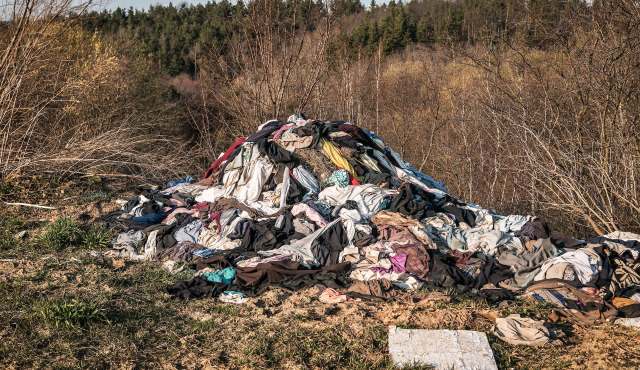
A new study from Nepal is highlighting an alarming source of pollution in one of the country's most ecologically and culturally important rivers — and fast fashion isn't helping.
What's happening?
The Kathmandu Post reports that a youth-led environmental group, Better Chitwan, has found that plastic and textile waste make up the majority of pollution in the Narayani River.
During a week-long field survey across eight sites, researchers found that plastic constituted 42.5% of the total waste. In some areas, such as the pilgrimage and cremation site of Devghat, the percentage rose to 72%.
But what's also worrying is the amount of clothing waste found clogging the river. Textile waste made up more than 17% of the total pollution.
The Narayani River flows through forests and villages, providing livelihoods, irrigation, and tourism income. But photos and findings from the survey show snack wrappers, syringes, and mountains of plastic and fabric waste invading the waterway.
Why is textile waste concerning?
While plastic gets most of the spotlight when we're talking about pollution, textile waste is an environmental nightmare — and fast fashion is a big reason why.
Watch now: Giant snails invading New York City?
Today's brands churn out cheap clothes at lightning speed, designed to wear out quickly. Not only does this encourage customers to keep forking over money for new items, but it also drives up demand for textile production, meaning more pollution in the process.
Globally, we produce over 100 billion garments a year , and most of them end up in landfills, rivers, or are burned. The fashion industry generates between 2% and 8% of the air pollution overheating our planet, and textile dyeing is the second largest water polluter in the world.
Textiles shed microplastics , leaks dyes and chemicals, and can block waterways, harming both nature and human health.
What's being done about plastic and textile pollution?
Residents and environmentalists in Nepal are calling for better waste regulations, a ban on single-use plastic bags in sensitive areas, and immediate action to stop sewage and landfill runoff into the river.
|
Which of these factors would most effectively motivate you to recycle old clothes and electronics? Returning my money Letting me trade for new stuff Making it as easy as possible Keeping my stuff out of landfills Click your choice to see results and speak your mind. |
For everyday people, one of the easiest ways to fight plastic pollution is to break up with fast fashion and reduce textile waste at home.
That means buying fewer but better-quality clothes, thrifting instead of buying new, and donating gently used items rather than tossing them. It saves money — in fact, Thrifting can save you more than $1,700 a year. — and helps keep clothes out of rivers like the Narayani.
Regular plastics are still a big problem, too. You can help by using less plastic overall. One way to start is to learn how to Choose plastic-free options for everyday products. .

Join our free newsletter for good news and useful tips , and don't miss this cool list Here are some simple ways to help yourself while also helping the planet.
New study uncovers disturbing impact of fashion industry far from the runway — here's what you need to know first appeared on The Cool Down .


0 Komentar